10 ways Yellowstone will make a difference
How the new supercomputer will help tackle major challenges
Sep 11, 2012 - by Staff
Sep 11, 2012 - by Staff
September 11, 2012
“The Yellowstone supercomputer will dramatically advance our understanding of Earth," says Al Kellie, director of NCAR’s Computational and Information Systems Laboratory (CISL). “Its computing capacity and speed will allow us to investigate a wide range of phenomena that affect our lives, with more detail than ever before.”
Here are just 10 examples of how the new system coming online at the NCAR-Wyoming Supercomputing Center—and systems to come—are poised to tackle major challenges confronting our society.
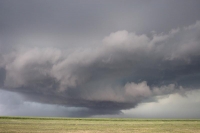
Scientists will be able to simulate these small but dangerous systems in remarkable detail, zooming in on the movement of winds, raindrops, and other features at different points and times within an individual storm. By learning more about the structure and evolution of severe weather, researchers will be able to help forecasters deliver more accurate and specific predictions, such as which locations within a county are most likely to experience a tornado within the next hour.
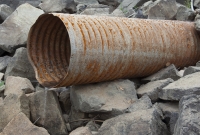
Yellowstone will support global and regional climate modeling in much greater detail, helping to answer such questions as which regions will receive more or less precipitation in a warming world and which may face especially withering drought. Yellowstone’s high-resolution capabilities will also enable scientists to represent the heights of mountains more precisely within climate models, which will help project future snowpack in regions that supply water to vast agricultural tracts and millions of residents, such as California’s Sierra Nevada and the Colorado Rockies.

As the nation’s portfolio of energy options continues to grow, oil and gas remain key elements of the mix. Yellowstone can be used to model large oil and gas deposits in difficult-to-access regions several miles below Earth’s surface in greater detail. Subsurface models can also help identify areas that could be used as reservoirs to store carbon, keeping it out of the atmosphere and helping to reduce the effects of burning fossil fuels.
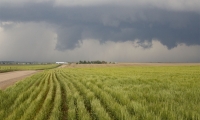
Farmers, shipping companies, utilities, and other planners would benefit enormously from forecasts that accurately predict weather conditions a month in advance. Because large-scale oceanic and atmospheric patterns play such a major role at this time scale, scientists will rely on supercomputers such as Yellowstone to provide needed detail on the effects of these big patterns on future local weather events. Yellowstone’s size also allows for more ensembles—multiple runs of the same simulation, each with a small change in the initial conditions—that can shed important light on the skill of longer-term forecasts.

Wildfires create their own weather, interacting with nearby atmospheric conditions to drive the blazes through terrain in ways that are highly complex and difficult to simulate. By enabling more realistic modeling, Yellowstone can lead to improved predictions of fire patterns that may help both residents in threatened areas and firefighters trying to control the blaze.

As the extent and thickness of sea ice diminishes, industries in the United States and elsewhere are eying the Arctic for potential shipping lanes and increased extraction of natural resources. Using supercomputers such as Yellowstone, scientists can work toward the development of seasonal forecasts of sea ice to help decision makers anticipate sea ice patterns months in advance. Climate modeling on Yellowstone also will help determine how soon the Arctic might experience ice-free conditions in summer, which could have major effects on local ecosystems and on regional weather and climate.
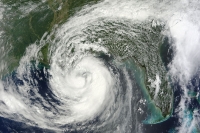
While forecasters have made great strides in predicting the track of a hurricane several days in advance, it remains difficult to predict major changes in intensity or to identify which clusters of tropical thunderstorms will develop into hurricanes. The supercomputers at the NWSC will help answer those questions by enabling researchers to decipher the impacts of the complex processes involved, including sea surface temperatures, upper-level winds, regions of dry and moist air in the larger environment, and small-scale changes of temperature and humidity within a tropical cyclone.
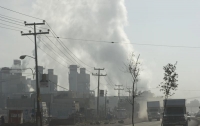
Pollutants such as particulate matter and ozone-filled smog threaten both human health and the environment, including crops. Atmospheric chemists plan to run simulations on Yellowstone that will help us better understand the regional and global evolution and movement of pollutants, potentially leading to forecasts of local air quality several days in advance.
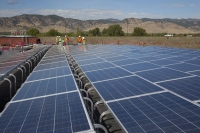
To harness more wind and solar energy, utilities must better anticipate shifts in local wind and cloud conditions. Yellowstone will help that effort by enabling scientists to simulate very detailed wind flows over various types of terrain, as well as cloud development and change for several types of clouds that have differing effects on solar radiation.

As scientists gain new insights into the geometry of tectonic plates and their dynamic interactions, they need more powerful supercomputers to simulate faults worldwide and better understand various types of earthquakes. Such knowledge can ultimately help lead to earlier warnings of potentially deadline climate events.
Eleven initial experiments scheduled for fall 2012 will help put Yellowstone through its paces. See Accelerated scientific discovery for the details.
All photos ©UCAR, except as indicated.